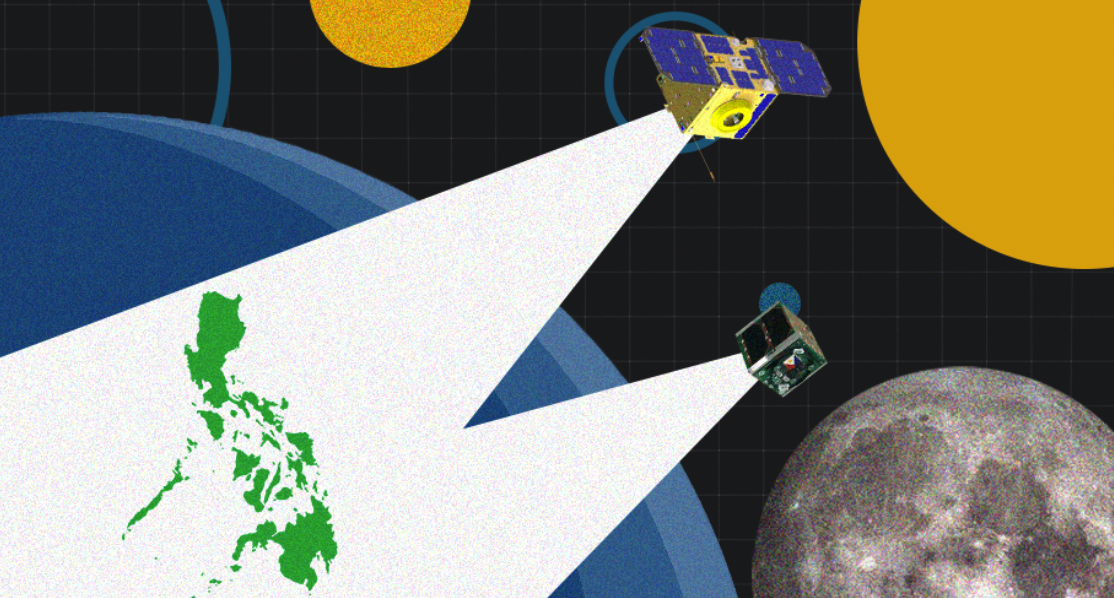(Quezon City, 08 August 2021) The Philippine Space Agency (PhilSA) marks the second anniversary of the signing of the Philippine Space Act or R.A. 11363 with the theme “PhilSA: Gabay mula Kalawakan, Tanglaw sa Pagbangon.” This year’s theme highlights the increasingly valuable role of space science and technology applications (SSTA) in the country’s recovery from the pandemic and in forging the nation’s development through digital governance and a knowledge economy. PhilSA’s flagship initiatives of space data mobilization and advanced satellite development aim to further strengthen science-backed planning and policy-making across society, and to build high value local industries and a knowledge workforce.
“The Philippine Space Act is an important landmark in our country’s long-held aspiration to contribute to a community of space-capable and space-faring nations. We mark the second anniversary of the Act and of the establishment of the PhilSA with stronger resolve and vigor, and we continue to focus on the work of creating and adding value in space for and from Filipinos and for the world,” says Director General Joel Joseph S. Marciano, Jr.
PhilSA is heightening efforts in sharing its expertise and resources with other government and private entities in the utilization of space science and technology data, facilities, and systems to help enhance their ability to perform their respective mandates and duties, in line with Improved Public Access and Resource-Sharing under the Philippine Space Act.
As an example, Earth Observation and remote sensing satellites are being used to demonstrate our capabilities to monitor and analyze the economic impact of Covid-19 through the Space Data Dashboard. This platform was jointly developed by PhilSA and the Advanced Science and Technology Institute of the Department of Science and Technology (DOST-ASTI). The combined techniques of Artificial Intelligence (AI) and remote sensing (RS) enables the more efficient monitoring of critical infrastructure, movement of goods on ships and vehicles, and changes in air and water quality. These direct and indirect indicators provide data needed by experts to assess the economic impact of the Covid-19 crisis across wide geographic areas. In turn, this can help the country determine our economic recovery strategies and monitor the ensuing pace of recovery.
PhilSA also intends to contribute to efforts aimed at improving Internet access in the country by bringing relevant space technologies to the fore. “In relation to Internet connectivity being one direct application or downstream utilization of SSTA, we are shining the spotlight on the space segment and leveraging significant advancements in satellite technologies in helping bridge the digital divide. To this end, the PhilSA is working with various partners in an initiative that aims to accelerate the deployment of these new broadband Internet satellite services locally,” says DG Marciano.
The agency supports and collaborates with the academe, the private sector, and other government agencies to promote the growth of space S&T by performing basic and applied R&D in SSTA, developing space education and public awareness initiatives, and providing grants and contributions to support programs or projects relating to scientific or industrial space R&D. These are designed to generate a robust and vibrant local space industry and economy over the long term. In particular, PhilSA also looks forward to the implementation of its scholarship and grants program, which is expected to kick off in 2021.
In coordination with the Space Technology and Applications Mastery, Innovation and Advancement (STAMINA4Space) Program, the development of the country’s biggest satellite yet, the Multispectral Unit for Land Assessment (MULA), began this year. The Filipino engineers involved in the MULA satellite are returning to the Philippines this month after a full immersion in the United Kingdom for the design and manufacturing process. Nanosatellites Maya-3 and Maya-4 were completed and turned over to the Japan Aerospace Exploration Agency (JAXA) this year, and are set for launch soon.
“The development, launch and use of these new satellites are critical milestones in our journey as a nascent space actor. In recent years, we’ve seen an increasing utilization of space technology in addressing many of today’s pressing concerns. That is why we gear our efforts towards capacitating our very own local scientists and engineers to be able to develop and operate our own satellites that are tailored according to our needs. Having this endogenous capacity allows us to harness this technology as a tool for diverse applications that contribute to overall national socio-economic development,” according to Deputy Director General Gay Jane Perez.
PhilSA also established linkages with international space agencies and cooperates with them on the development and peaceful uses of outer space. It represents the Philippines in the United Nations Committee on the Peaceful Uses of Outer Space (UN COPUOS) and other similar space-related forums, assemblies, and organizations. PhilSA made significant strides during its first year of operations, sustaining the momentum built from previous and current satellite development and data mobilization projects. Landmark agreements with the United Nations Office for Outer Space Affairs (UNOOSA) and JAXA were signed to ensure strengthened capacity-building and cooperation with international space agencies in areas of satellite building, space exploration, space law and policy, and data utilization. PhilSA also continues to undertake the relevant work towards the ratification of the UN Outer Space Treaties in coordination with the Department of Foreign Affairs (DFA).
PhilSA continues to strengthen its institutional capability and human resource buildup in its second year. “During these formative years of the agency, we are given this unique opportunity to build an institution that will thrive with a culture of science, innovation, and social responsibility at its core,” says DDG Perez. “The agency takes pride in its young, talented, and hard-working team that continues to propel the agency to new heights,” she adds.
“The mobilization of the PhilSA is happening in the midst of combatting the challenges brought about by Covid-19, so our venture is made even more compelling and engrossing, yet humbling and fulfilling at the same time. Our commitment to the government’s foresight and to pursuing opportunities to build a vibrant local space ecosystem is unyielding,” says DG Marciano. “Through the Filipino spirit of ingenuity and bayanihan, we will continue to bring space science, technology and innovations to bear on the mission of bridging, uplifting and empowering the Filipino nation,” he adds.
The Philippine Space Act, signed on 08 August 2021 created PhilSA as the central government agency addressing all national issues and activities related to space science and technology applications (SSTA). The Act mandates PhilSA to be the primary policy, planning, coordinating, implementing, and administrative entity of the Executive Branch of the government that will plan, develop, and promote the national space program. The Agency, directly attached to the Office of the President, facilitates the promulgation of executive and administrative orders and formulation of regulatory and legislative proposals on matters pertaining to SSTA development. PhilSA is headed by a Director General with the rank of a Cabinet Secretary, who also serves as the Presidential Adviser on Space Matters.
The Agency pursues the following Key Development Areas in SSTA: National Security and Development, Hazard Management and Climate Studies, Space Research and Development, Space Industry and Capacity Building, Space Education and Awareness, and International Cooperation.
-30-
For media inquiries please contact Tricia Zafra through 09996773417 or email publicrelations@philsa.gov.ph




